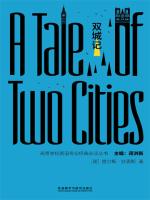Resurrection
Charles Dickens’ A Tale of Two Cities is more than a classic; it is a monumental work of historical fiction that transcends its era. While famous for its opening line contrasting the best and worst of times, the novel is a profound exploration of the human spirit caught in the violent tides of history.
Plot and Themes: The Personal Within the Political
The story unfolds against the brutal backdrop of the French Revolution, moving between the decadent aristocracy of Paris and the orderly, yet troubled, streets of London. At its heart, however, are the deeply personal stories of its characters.
Resurrection: This is the central theme. Dr. Manette is "recalled to life" after 18 years of unjust imprisonment in the Bastille. Charles Darnay seeks resurrection by renouncing his corrupt family name. Most powerfully, Sydney Carton achieves a spiritual resurrection through the ultimate sacrifice. The novel asks what it truly means to be reborn.
The Duality of Human Nature: The title itself hints at this theme, which is reflected in the characters. London and Paris represent two different worlds, but the duality exists within individuals. The cruel Marquis Evrémonde and the benevolent Charles Darnay come from the same bloodline. Sydney Carton, the dissipated alcoholic, and his moral double, Charles Darnay, are two sides of the same coin, with Carton possessing a nobility that his counterpart lacks.
Violence and Vengeance: Dickens does not shy away from depicting the horrors of the Revolution. The grinding poverty of Saint Antoine and the savage glee of the tricoteuses (knitting women) at the guillotine are rendered with terrifying clarity. The novel is a stark warning about how oppression breeds an equally brutal revenge, symbolized by the vengeful Madame Defarge, whose knitting becomes a record of death sentences.
Characters: The Soul of the Story
The characters are the engine of the novel's enduring power.
Sydney Carton stands as one of literature's most memorable figures. Initially presented as a cynical and wasted talent, his unrequited love for Lucie Manette unlocks a latent, breathtaking heroism. His final act is not just a plot point; it is one of the most powerful and moving conclusions in all of English literature, transforming him from a tragic figure into a Christ-like savior.
Lucie Manette is the "golden thread" that binds the characters together, representing love, compassion, and domestic stability in a world gone mad.
Madame Defarge is a formidable and terrifying antagonist. While her thirst for vengeance is understandable given her tragic past, she becomes an embodiment of the Revolution's merciless and dehumanizing nature.
Strengths and Lasting Impact
Dickens's prose is at its most potent here. The scenes are cinematic—from the storming of the Bastille to the relentless progress of the revolutionary mobs. His use of symbolism, like the wine cask breaking in the streets of Saint Antoine, foreshadowing the bloodshed to come, is masterful.
While some critics point to moments of melodrama or a somewhat passive central heroine, these are minor quibbles in a work of such grand scale and emotional depth.
Conclusion
A Tale of Two Cities is not a gentle read, but it is an essential one. It is a story about the capacity for both unspeakable cruelty and incredible redemption. It reminds us that the personal and the political are inextricably linked, and that in the darkest of times, individual acts of love and sacrifice can shine with an eternal light. Sydney Carton's final words, "It is a far, far better thing that I do, than I have ever done," cement the novel's status as a timeless testament to the possibility of human transformation.



 京公网安备 11010802032529号
京公网安备 11010802032529号